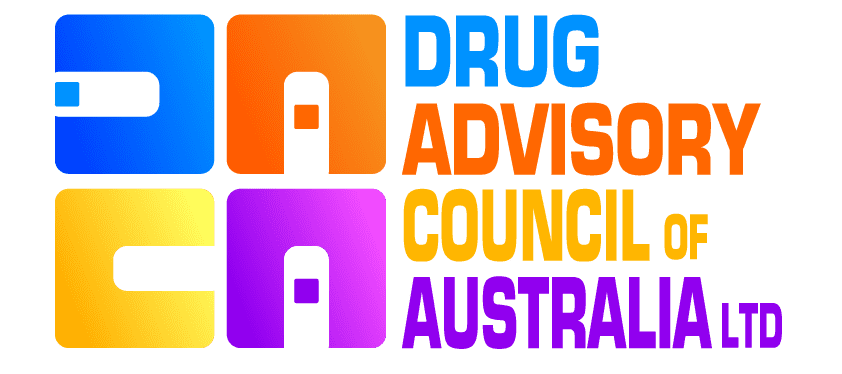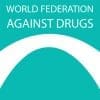Cannabis is never medicine
The Case Against Medical Cannabis
By David Perrin National Chairman Drug Advisory Council of Australia
A review of the book “Cannabis and Cancer – Arthur’s Story” by Pauline Reilly
Beware of vested interests
Those who wish to see cannabis legalized are following overseas trends by using the strategy of having it first accepted for medical purposes to give cannabis credibility as a therapeutic substance. Once some respectability for its use has been established, the intention of its advocates is to pressure the government for its legalization. A new book “Cannabis & Cancer- Arthur’s Story” fits in perfectly with this strategy. Arthur’s story is about a Victorian couple in their 80’s, Pauline and Arthur Reilly. The husband, Arthur, battled prostate cancer for 11 years and for the final 8 months self prescribed cannabis to ease the effects of the prescribed opiate drugs described by Reilly as “that horrible morphine”. Throughout Arthur’s story, Reilly continually states that she only supports cannabis for medical purposes and not recreational purposes. However, her arguments suggest otherwise. The legalization of cannabis as a medicine will add millions of dollars to tax expenditure and will create a new group of professionals with vested interests to manage the known toxic effects.
Legalized cannabis will expand use and toxic effects
Reilly describes cannabis as a soft drug and likens it to alcohol and nicotine. She argues that both are legal and cause more illnesses and death than cannabis. Reilly’s presentation makes it impossible to distinguish the medical use from the recreational use. Cannabis is not a soft drug. As with legalized alcohol and nicotine, legalized cannabis will lead to an expansion of cannabis use with more illnesses and deaths just like alcohol and nicotine. Cannabis is illegal precisely because of its known mind-altering, addictive and toxic effects. The promotion of the medical use of cannabis is a poorly disguised step to “educate” the community to accept the legalization of cannabis for recreational use. But a study of 18 to 29 year olds published in August 2001 by the NSW Bureau of Crime Statistics & Research, supports the conclusion that sanctions against the use of cannabis discourages its use. The Bureau found that keeping cannabis illegal stopped 91% of existing users from using more and was the reason why 19% of former users ceased using cannabis and also why 29% of those that have not used cannabis did not ever try it.
Cannabis is bad medicine
Smoked or ingested cannabis does not fit into the conventional method of using drugs in medicine. The chemical substance should be identified, its strength determined, its dosage worked out, its frequency of administration and its side effects identified, so that the patient can be fully informed about its pharmacodynamics, its pharmacology, its toxicology and its addictive properties. You can’t do any of those things with the proposed use of smoked or ingested cannabis, obtained from cannabis plants with varying strengths with the active ingredients of Tetra hydrocannabinol (THC) and the multitude of other chemical substances in the plant. True clinical trials are not possible. Cannabis has a very long half-life so that it accumulates in fatty tissue such as the brain and reproductive organs. It is an addictive drug. It causes cognitive dysfunction affecting self-awareness, memory, concentration, skills, behavior, personal relationships etc. It has other pharmacological effects, particularly its effect on the immune system so that it endangers the health of people on chemotherapy or who have florid AIDS. Also, its long-term use in chronic diseases cannot be supported. There are well-tried drugs, which are more effective and safer for every one of these conditions. In a series of three articles in the British Medical Journal of 7 July 2001, the following conclusions were reached.
- On the current evidence, cannabinoids can be recommended only for use in controlled clinical trials in carefully selected conditions for which there is no effective treatment. (Editorial).
- Cannabinoids are no more effective than codeine in controlling pain and have depressant effects on the central nervous system that limit their use. Their widespread introduction into clinical practice for pain management is therefore undesirable.
- In selected patients, the cannabinoids tested in these trials may be useful as mood-enhancing adjuvants for controlling chemotherapy related sickness. Potentially serious adverse effects, even when taken short term orally or intramuscularly, are likely to limit their widespread use.
In the context of the medical use of cannabis, these articles reveal that the proposal to use such a substance in the smoked or ingested form is not justified because better treatments are available.
The reference sources in Arthur’s Story disclose the biased nature of the information that Reilly uses for her arguments. Professor David Pennington, who wrote the foreword of Arthur’s Story, Dr. Alex Wodak, the national president of the Drug Law Reform Foundation in Australia, Help End Marijuana Prohibition (HEMP), National Organization for Reform of Marijuana Laws (NORML) all support full legalization of cannabis
Cannabis causes cancer
A Medical Journal of Australia article in April 1992 highlights cancer of the upper airways, tongue, lungs, head, neck, mouth, larynx, upper jaw and the respiratory tract as all being related to smoking cannabis. This fact alone should be enough reason not to give a cancer causing agent to a patient with cancer such as Arthur.
Cannabis suppresses the human immune system
In Arthur’s Story Reilly states “One risk with cannabis is the possible, but not proven, side effect of suppression of the immune system. Chemotherapy also has this effect, which patients are prepared to risk.” She goes on to say “does it matter?”. The Medical Journal of Australia article also highlights the experimental evidence of the immunodepressive effects of THC leading to cancer of the upper aerodigestive tract. It does matter when other more effective drugs are available to control the symptoms described in the book without imperiling the health of the patient and the common good of the community.
Cannabis damages other parts of the human body
The Medical Journal of Australia article also discloses that the regular use of cannabis has adverse effects on the brain, heart and lungs. It also impairs learning, memory, perception and judgment. These impacts of cannabis indicate it is clinically unwise for it to be used in the manner advocated by Reilly as a form of “medical management.”
Medicines must be subject to rigorous scientific scrutiny
Approvals for drugs used for humans must be subject to rigorous scientific scrutiny. In the past this has not always been the case (e.g. thalidomide). Under no circumstances should this scrutiny be undermined by political campaigns. In a small number of states in the USA and in some European countries cannabis as medicine has been legalized by a popular vote. The Lindesmith Centre and the Drug Law Reform Foundation in the U.S.A heavily financed the referenda in the USA. They want all drugs legalized and have poured millions of dollars into these campaigns
Arthur’s story seeks to undermine the scientific process and replace it with a political process for the use of drugs in medicine. If anything, Australia’s scientific scrutiny of medi




